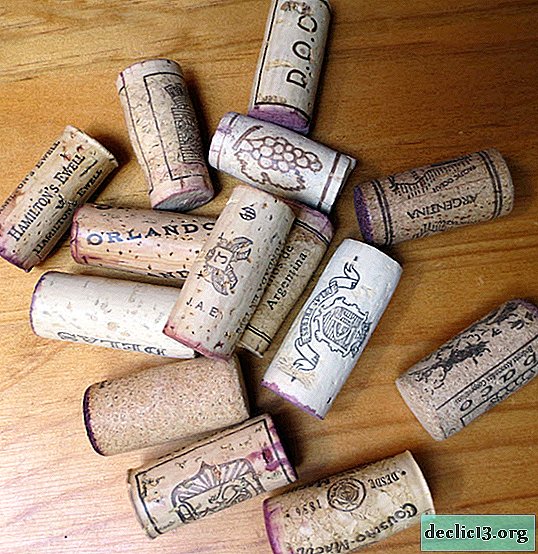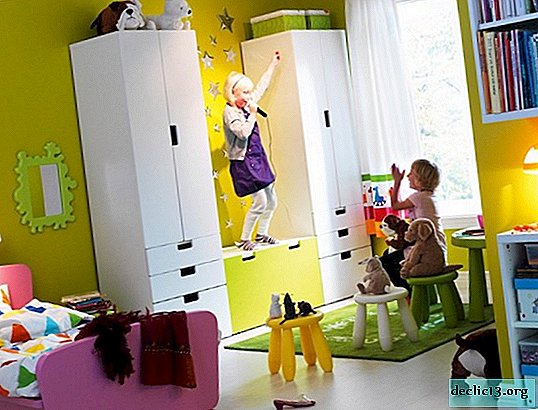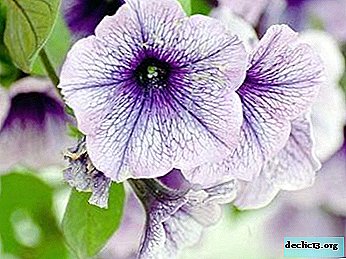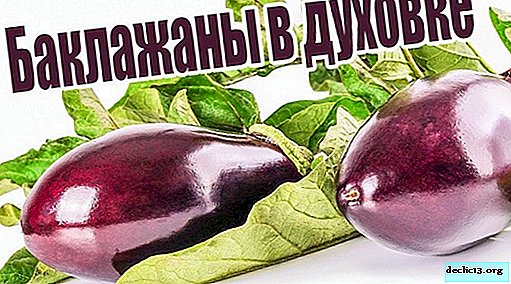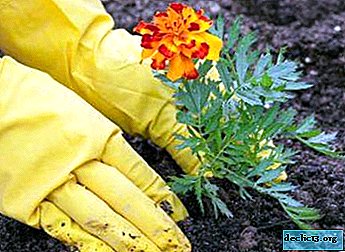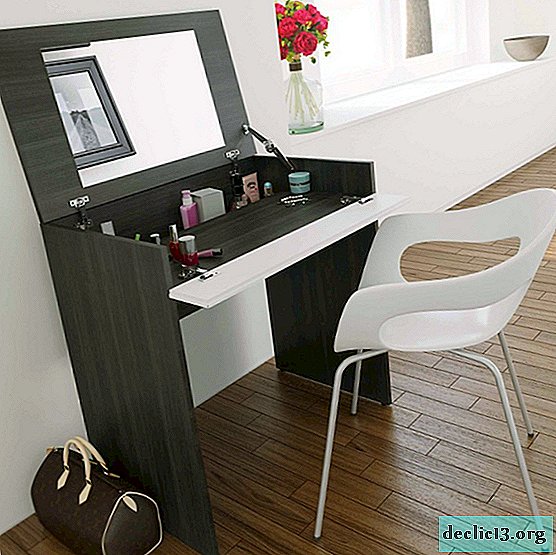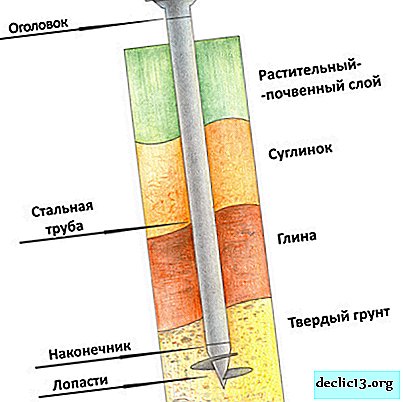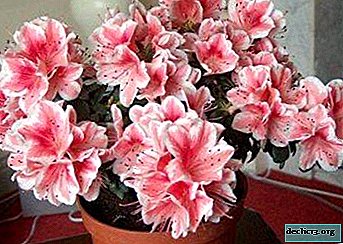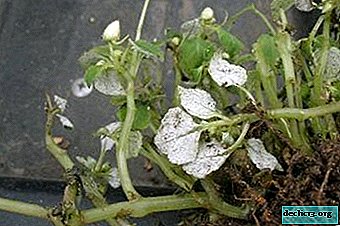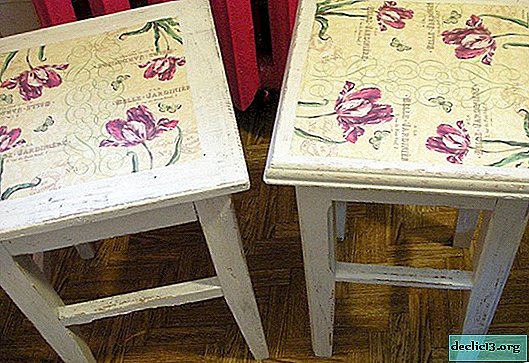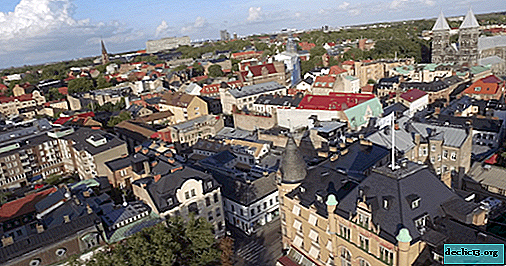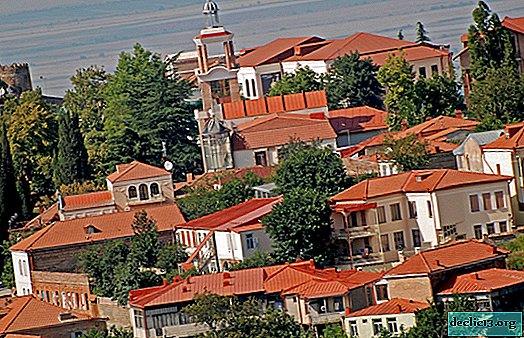Small-flowered Petunia - one of the best in herbal compositions: the nuances of care and cultivation
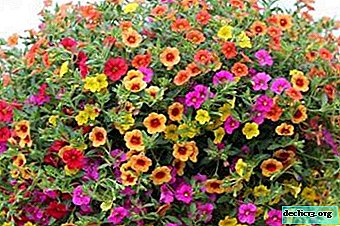
Small-flowered petunia is an ornamental culture that is so loved by amateur gardeners.
Its advantage is that it is not picky in care, and it can be grown in open ground or in pots. Petunia will be an excellent decoration for the office, cafe, kitchen, balcony.
You can get an original floral arrangement if you plant a petunia along with begonia, geraniums or lobelia.
Botanical Description and History
The birthplace of the flower remains South America, Brazil and Argentina. Flowering of small-flowered petunia occurs before large-flowered. A large number of flowers are formed on the shoots, the diameter of which is 5 cm. The plant is distinguished by a long and abundant flowering.
Reference! Small-flowered petunia is not picky in terms of care, loves the sun, has a negative attitude to rains and bad weather. Compared to the large-flowered petunia, it is not so attractive, but its bright flowering, which lasts until the very frost, does not leave anyone indifferent.Varieties
Fantasy
This series of small-flowered petunias includes 9 hybrid varieties. The height of the bush reaches 20 cm, and the diameter of the flower is 4 cm. Inflorescences are presented in a wide variety of colors, including:
- white;
- salmon;
- pink raspberry;
- cream;
- violet blue.

Mirage
This series has 13 hybrids. They have double flowers, and their diameter is 6-9 cm. During flowering, the bush is strewn with inflorescences of the following shades:
- pink with dark pink veins;
- pink-lilacs with purple veins;
- pink with red and raspberry veins.

Die crystals
The height of the plant is 30 cm, and the diameter of the bush is 25 cm. The flowers are large, size 7 cm. The peculiarity of the variety is that the plant gradually changes its color. Flowers from darker become lighter. At first they are pink-lilac, and then light lilac and muffled-lilac. The flowers have purple-burgundy veins, which are contrasting throughout the flowering period.

Ampelic
This petunia deserves special attention, since it actively decorates balconies, loggias, terraces and is best suited for growing in a cache-pot. Ampelic petunias have long, drooping and flexible stems. Their length is 1.5 m. They are able to transform any unattractive structure. The gamut of flowers is incredibly wide: from neutral white to deep red, purple or blue.

You will find complete information about ampelous petunia in this article, and about growing and caring for this species, read here.
Below we suggest watching a video on the formation of an ampelous petunia bush:
Landing
In mid-May, when the threat of frost has gone, seedlings can be planted in open ground or in pots. Sow seeds for seedlings in mid-March. Subject to these terms, petunia blooms in June. This method of planting is preferable if you plant a flower on the balcony.
If there is a summer cottage, then you can immediately sow the seeds in open ground. Do it at the end of May. If the climatic conditions are favorable, then the planting material will give the first shoots at the end of June.
The soil
Small-flowered petunia is not picky to the ground. But if possible, plant it on sandy or loamy soil, which has good drainage. The substrate must be nutritious, breathable and loose. To plant petunia in a pot, you can prepare the nutrient mixture yourself, using the following components:
- turf land - 2 parts;
- peat - 1 part;
- sand - 1 part.
To add looseness to the soil add perlite.
Lighting and location
Small-flowered petunia is a photophilous plant, so it is important to choose a suitable place for it. It is best to grow a flower in an open flowerbed, where there is a lot of sunlight.
Watering
Small-flowered petunia undergoes waterlogging and overdrying perfectly. But you should not allow standing water in the pot, otherwise it will lead to the death of the plant. Watering should be regular and correct. Only then will the flower bloom for a long time and plentifully. Water the plant in the summer 2 times a day. In the presence of high-quality drainage, stagnation of water is excluded.
Important! It is desirable to water the plant under the root, so as not to injure the buds.Top dressing
Small-flowered petunia grows well without the addition of nutrients. But for abundant flowering, apply fertilizer 2 times a month. Use is worth compositions designed for flowering crops. Only their dosage should be 2 times less than that indicated in the instructions.
Common Diseases and Pests
Small-flowered petunia is a hardy plant. But if you violate the agrotechnical rules, then this is fraught with diseases:
 Blackleg. This is the most common fungal disease that can be recognized by the soft and dark basal part of the stem. Immediately after detection, remove the affected plant and part of the adjacent soil. Treat the remaining cultures with fungicides.
Blackleg. This is the most common fungal disease that can be recognized by the soft and dark basal part of the stem. Immediately after detection, remove the affected plant and part of the adjacent soil. Treat the remaining cultures with fungicides.- Powdery Mildew This is another common fungal disease, which manifests itself in the form of white plaque on leaves and flowers. The main reason for the development is a sharp jump in temperature and humidity, especially in the hot season. Remove the affected parts of the flower, and treat the plant itself with sulfur.
Small-flowered petunia can infect with such pests:
- spider mite;
- aphid;
- whitefly.
To combat them, systemic insecticides are used.
Propagation Features
Seeds
This method of propagation is the most common, despite the fact that the seeds grow quite slowly. Planting activities should be carried out 10-12 weeks before planting in open ground. To do this, you need a wooden or plastic box with drainage, a nutrient mixture.
Advice! Strongly deepen the seeds is not worth it. Just scatter them on the surface of the soil and cover with a film.After 5-7 days, the first shoots are formed. From that time open the film every day. And when 2-3 leaves are formed, then plant the plants in separate cups. Planted in open ground in mid-May.
Cuttings
This method of reproduction has its own characteristics:
 Dig up the necessary specimens in the garden. Store in a cool place in winter.
Dig up the necessary specimens in the garden. Store in a cool place in winter.- In February, cut the cuttings from the plant. If the petunia began to wither, then cut the cuttings earlier.
- Remove the lower leaves, leave only 2-3 pairs on top.
- Set the cuttings in water so that they take root. Can be immediately placed in a light soil composition, covered with a greenhouse on top.
- Before planting, lower the stalk to Kornevin. For the greenhouse, use the top of the plastic bottle.
- As soon as new leaves begin to form on the cuttings, remove the lid from the greenhouse so that the plant gradually adapts to the new microclimate.
- After 7 days, completely remove the bottle.
Possible problems
When growing small-flowered petunia, the following problems arise:
- Rain does little damage to the plant. If in summer it is strong, then drops of water tear delicate petals, as a result of which the bush loses its decorative effect. With prolonged and prolonged rains, petunia ceases to bloom. If the plant is grown in a pot, then before the rain they are brought into shelter. Watering also produce gently, under the root.
- Ampel species may be affected by windso that baskets and pots should be placed in places protected from the wind.
- In small-flowered terry varieties, wilted flowers spoil the appearance. They are especially noticeable in flowerpots, flower pots. In order not to disturb the decorativeness of plantings, remove flowers in a timely manner.
Small-flowered petunia is an incredibly beautiful flower that adorns not only a flower bed, but also apartments. A great option for beginner gardeners who do not have a certain experience in terms of growing decorative crops. Subject to all agrotechnical conditions, the plant will bloom for a long time and plentifully until the very frost.

 Blackleg. This is the most common fungal disease that can be recognized by the soft and dark basal part of the stem. Immediately after detection, remove the affected plant and part of the adjacent soil. Treat the remaining cultures with fungicides.
Blackleg. This is the most common fungal disease that can be recognized by the soft and dark basal part of the stem. Immediately after detection, remove the affected plant and part of the adjacent soil. Treat the remaining cultures with fungicides. Dig up the necessary specimens in the garden. Store in a cool place in winter.
Dig up the necessary specimens in the garden. Store in a cool place in winter.